Archived - GBA+: Chapter 3
GBA+: Chapter 3
Redressing Past Wrongs and Advancing Self-Determination
Advancing Reconciliation by Settling Specific Claims
- Renew and replenish funding for the Specific Claims Settlement Fund for a further three years.
- $40.0 million over five years to First Nations to help research and develop their claims.
Specific claims are historical claims made by First Nations against Canada regarding the administration of land and other assets in pre-1975 treaties.
The renewal and replenishment of the Specific Claims Settlement Fund will ensure the availability of resources to pay out negotiated settlements and awards of the Specific Claims Tribunal. This measure will help advance reconciliation with Indigenous Peoples and redress past wrongs related to Canada’s failure to discharge its legal obligations to First Nations.
Some First Nations that have received settlements have used the funds to improve their communities by augmenting social services, local infrastructure and education programs.
GBA+ was performed:
Early in the idea development phase
Target population: Indigenous Peoples—First Nations
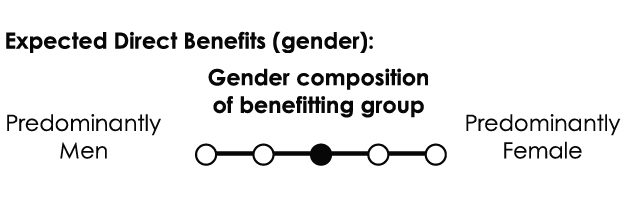
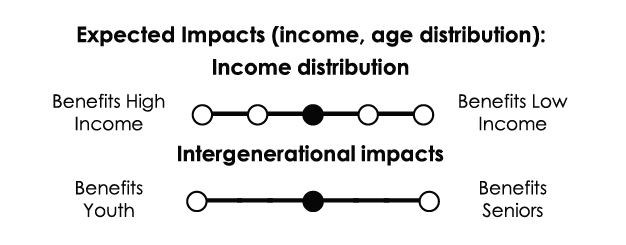
GBA+: Chapter 3
Redressing Past Wrongs and Advancing Self-Determination
Forgiving and Reimbursing Loans for Comprehensive Claim Negotiations
- $1.4 billion over seven years, starting in 2018–19, to forgive all outstanding comprehensive claim negotiation loans and to reimburse Indigenous governments that have already repaid these loans.
Prior to 2018, Indigenous groups received loans from the federal government to support their participation in comprehensive claim negotiations. The accumulation of negotiation loan debt has led to financial stress for a number of Indigenous groups, and created a significant barrier to concluding agreements.
Budget 2019 will forgive these loans, which means that Indigenous communities can reinvest to advance their priorities, such as governance, infrastructure and economic development. Forgiving loan debt will also improve the financial well-being of Indigenous communtities. Potential future investments may result in socio-economic improvements for all community members.
GBA+ was performed: Early in the idea development phase
Target population: Indigenous Peoples


GBA+: Chapter 3
Strengthening Governance Tools
Better Information for Better Services
- $78.9 million over seven years and $13.7 million per year ongoing to permanently fund the Surveys on Indigenous Peoples and the First Nations Regional Health Survey.
Providing permanent funding for the Surveys on Indigenous Peoples and the First Nations Regional Health Survey will support more robust gender-based analysis for community decision-making and for Indigenous policy and programs.
The surveys are designed to produce gender-disaggregated data, and include gender-focused statistics such as those related to child care and maternal health.
The surveys provide a unique source of culturally driven data that are not available from other sources, and are designed to capture unique, gender-specific, socio-economic and health-related perspectives of First Nations. The First Nations Regional Health Survey and the on-reserve component of the Surveys on Indigenous Peoples will be conducted by the First Nations Information Governance Centre.
GBA+ was performed: Mid-point
Target population: Indigenous Peoples,particularlyFirst Nations

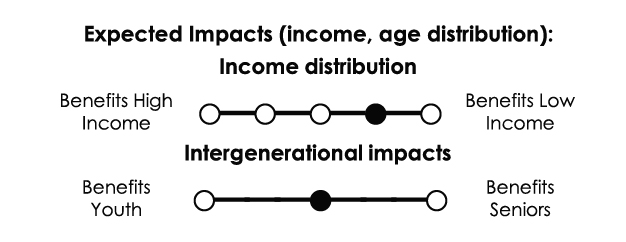
GBA+ Responsive Approach
The Government will co-develop approaches to support gender representation in co-development and engagement activities to ensure that the opinions of women, elders and youth are heard.GBA+: Chapter 3
Strengthening Governance Tools
Core Governance Support for First Nations
- $48.0 million over two years to directly support First Nations communities in greatest need in meeting governance costs.
Providing incremental funding to support First Nations communities in greatest need in meeting governance costs is expected to contribute to socio-economic improvements for all community members.
First Nations governments are responsible for administering the majority of programs and services funded by Indigenous Services Canada, including education, social services, housing, and community infrastructure.
Governance funding supports band council operations and costs include salaries, travel allowances, utilities and rent, as well as holding elections. Funding also supports crucial financial and program administration capacity and community planning.
The proposed incremental governance funding will support communities in need, ensuring they have the people and tools in place to advance their priorities.
GBA+ was performed: Mid-point
Target population: Indigenous Peoples,particularlyFirst Nations


GBA+ Responsive Approach
Indigenous Services Canada will co-develop approaches to support gender representation in engagement activities to ensure that the opinions of women, elders and youth are heard.GBA+: Chapter 3
Making Progress on the Truth and Reconciliation Commission of Canada’s Calls to Action
Calls to Action 53 to 55—National Council for Reconciliation
- $126.5 million in 2020–21 to establish a National Council for Reconciliation.
The Truth and Reconciliation Commission of Canada’s Calls to Action 53 to 54 call upon the federal government to establish a National Council for Reconciliation as an independent, national oversight body, and provide multi-year funding to the Council. Call to Action 55 calls upon all levels of government to provide annual reports or current data requested by the Council so that it can report on progress towards reconciliation.
The proposed National Council for Reconciliation would be a multi-generational institution that would recommend approaches on how to promote, prioritize and co-ordinate reconciliation efforts between Indigenous Peoples and non-Indigenous Canadians.
It is expected that the long-term results of the Council’s work will primarily benefit youth, children and future generations, through its research, monitoring and advocacy, which could inform the work on eliminating the socio-economic gap between Indigenous Peoples and non-Indigenous Canadians.
GBA+ was performed: Mid-point
Target population: Indigenous Peoples

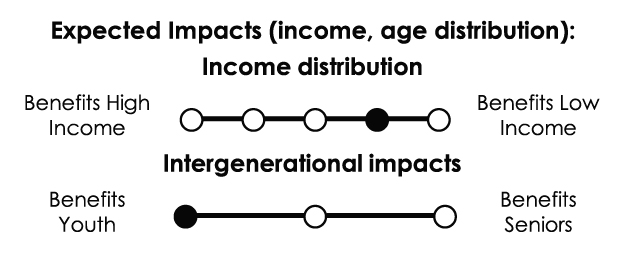
GBA+ Responsive Approach
Particular attention will be paid to ensuring that the composition of the National Council’s Board of Directors is gender-balanced, and that the Council’s by-laws and governance mechanisms reflect a commitment to gender equality.GBA+: Chapter 3
Making Progress on the Truth and Reconciliation Commission of Canada’s Calls to Action
Calls to Action 72 to 76—Honouring Missing Residential School Children
- $33.8 million over three years to develop and maintain the National Residential School Student Death Register, work with parties to establish and maintain an online registry of residential school cemeteries, and provide opportunities for commemoration.
The Truth and Reconciliation Commission of Canada’s Calls to Action 72 to 76 pertain to children who died or went missing while attending Indian Residential Schools. The First Nations Regional Health Survey (2018) reported that in a sample of First Nations on‐reserve and in northern communities, 74.4 per cent of adults either attended a residential school or had a parent or grandparent who attended.
The survivors and intergenerationally impacted families and communities represent a diverse cross-section of the Indigenous population, and the initiative is designed to be distinctions-based and inclusive.
The initiative is expected to contribute to long-term "seven generation healing" and be an important step toward improving the health and well-being of Indigenous men, women and communities, and reducing the gap in health and well-being outcomes between Indigenous Peoples and non-Indigenous Canadians.
GBA+ was performed: Early in the idea development phase
Target population: Indigenous Peoples, particularly residential school survivors and their families and communities


GBA+ Responsive Approach
Strategies will be employed to optimize reach to Indigenous individuals and communities, including intersectional identity groups and those who may experience challenges in participation (e.g., the LGBTQ2+ community, people with disabilities, the elderly, and persons living in rural and remote communities).
Respecting the wishes of the families and communities involved, steps will be taken to ensure that commemorations are culturally relevant. Specifically, the scope of commemorative activities will be shaped and led by Indigenous communities.
GBA+: Chapter 3
Making Progress on the Truth and Reconciliation Commission of Canada’s Calls to Action
Call to Action 50—Supporting Renewed Legal Relationships with Indigenous Peoples
- $9.1 million over three years to support the construction of an Indigenous Legal Lodge at the University of Victoria.
- $10 million over five years in support of Indigenous law initiatives across Canada.
The proposed investments will help develop the next generation of legal professionals, from Indigenous and non-Indigenous backgrounds across Canada, in all of its diversity. The proposed investments would also fulfill the Government’s response to the Truth and Reconciliation Commission of Canada’s Call to Action 50, and help advance the rebuilding of socially, culturally and economically thriving Indigenous nations across Canada. The proposed investment is designed to address GBA+ disparities currently found within the Canadian and Indigenous legal systems, by incorporating a culturally relevant gender-based approach.
GBA+ was performed: Early in the idea development phase
Target population: Indigenous Peoples
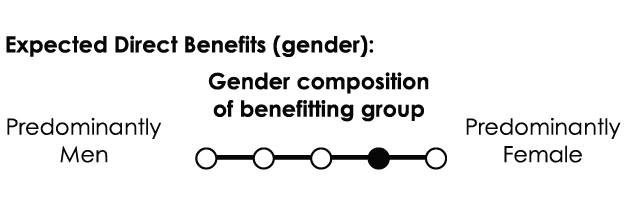


Increased representation of women and underrepresented groups in the judicial system
GBA+: Chapter 3
Making Progress on the Truth and Reconciliation Commission of Canada’s Calls to Action
Call to Action 66—Indigenous Youth and Reconciliation
- $15.2 million over three years to help ensure that the voices of First Nations, Inuit and Métis youth are heard and to support Indigenous youth reconciliation initiatives, through an Indigenous youth pilot program delivered by Canadian Roots Exchange.
Indigenous youth are the fastest-growing demographic in Canada. Call to Action 66 calls upon the Government to provide multi-year funding for community-based youth organizations to deliver programs on reconciliation and establish a national network to share information and best practices.
This initiative is expected to benefit Indigenous youth of diverse backgrounds, who will have increased opportunities for dialogue with their peers, through reconciliation-focused and community-based activities.
The national network will provide indirect benefits to the social circles of participants, including to non-Indigenous youth and the family members and communities of participating youth.
GBA+ was performed: Early in the idea development phase
Target population: Indigenous Peoples—youth

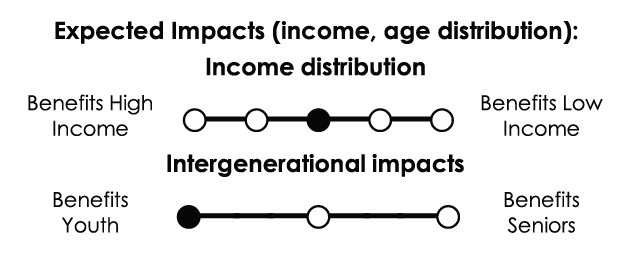
GBA+ Responsive Approach
Steps will be taken to ensure that the governance structure, scope of engagement with Indigenous youth, and focus of youth-driven research reflects the “diversity within the diversity” of First Nations, Métis and Inuit youth, including those who identify as LGBTQ2+.GBA+: Chapter 3
Making Progress on the Truth and Reconciliation Commission of Canada’s Calls to Action
Call to Action 80—National Day for Truth and Reconciliation
- $10 million over two years to Canadian Heritage’s Celebration and Commemoration Program, to enable community-level commemoration activities on the proposed National Day for Truth and Reconciliation, and celebrations on National Indigenous Peoples Day.
As of 2016, there were 1,673,785 people who identified as Indigenous, nearly 5 per cent of the total population.
June 21 is National Indigenous Peoples Day, and consultations are underway for the proposed National Day for Truth and Reconciliation.
These commemorative days would promote the heritage, diverse cultures and contributions of Indigenous Peoples. The Program may target and encourage the participation of specific groups of Indigenous people, particularly youth, but aims for broad participation to raise awareness, promote the values of inclusion and highlight diversity to all.
GBA+ was performed: Early in the idea development phase
Target population: All Canadians


GBA+: Chapter 3
Better Services for First Nations and Inuit Children
Continuing Implementation of Jordan's Principle
- $1.2 billion over three years to ensure that First Nations children continue to have access to the services that they need through Jordan's Principle.
Nearly 30 per cent of First Nations children report having one or more chronic health conditions such as asthma, anxiety disorders and learning disorders. By increasing access to health, education and social supports, Jordan's Principle will positively benefit boys, girls and gender-diverse First Nations children, in particular those with disabilities.
Jordan's Principle provides access to products, services and supports including speech language therapy, educational supports, medical equipment and mental health services. Funding will support access to a variety of culturally relevant services and products according to individual needs.
Jordan's Principle will also benefit lone parents and seniors, who are often overrepresented as caregivers of First Nations children in comparison to non-Indigenous counterparts.GBA+ was performed: On the existing program
Target population: Indigenous Peoples—First Nations children and youth with disabilities or health issues

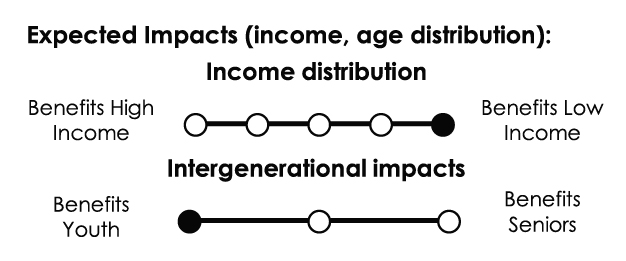

More years in good health
GBA+: Chapter 3
Preserving, Promoting and Revitalizing Indigenous Languages
Supporting Inuit Children
- $220 million over five years to address the immediate needs of Inuit children.
By providing support for an Inuit child-first approach, this initiative is expected to improve the direct delivery of services to Inuit children, who face considerable costs and barriers to services due to the remoteness and small size of communities in Inuit Nunangat. This can result in poorer health outcomes.
This investment will also support planning by Inuit and other government partners, to shift greater control of service delivery and coordination to Inuit regions.
There is limited information on the health of Inuit children in Canada. Budget 2018 provided funding to establish a permanent Inuit-led Health Survey, which will improve the availability of Inuit-specific health data.
GBA+ was performed: Early in the idea development phase
Target population: : Indigenous Peoples—Inuit children and youth


More years in good health
GBA+: Chapter 3
Preserving, Promoting and Revitalizing Indigenous Languages
Preserving, Promoting and Revitalizing Indigenous Languages
- $333.7 million over five years and $115.7 million per year ongoing to support the implementation of the proposed Indigenous Languages Act and to preserve, protect and revitalize Indigenous languages.
This measure will benefit Indigenous Peoples who have lost their traditional languages and culture due to a history of colonial practices and the legacy of the residential school system.
Indigenous women will play an important role in the continuity and transmission of Indigenous languages. As Indigenous women have a greater tendency to participate in Government language and culture activities (63 per cent of applicants to Canadian Heritage's Aboriginal Languages Initiative were female, according to administrative data from 2012 to 2016), women are likely to be the primary transmitters of Indigenous languages to future generations.
Elder members of Indigenous communities are more likely to speak an Indigenous language, and will also play an important role in the transmission of Indigenous languages to future generations.
Younger people are generally less likely to be able to speak an Indigenous language, yet they are also the future speakers of Indigenous languages; their language outcomes are critical to the maintenance and revitalization of their languages.
GBA+ was performed: Early in the idea development phase
Target population: Indigenous Peoples


GBA+: Chapter 3
Healthy, Safe and Resilient Indigenous Communities
On Track to Eliminate Boil Water Advisories on Reserve
- $739 million over five years and $184.9 million per year ongoing to support continuing efforts to eliminate and prevent long-term drinking water advisories.
Since November 2015, more than 80 long-term drinking water advisories on public water systems on-reserve have been lifted, 36 have been added and as of March 2019, 59 remain in effect.
As of March 2019, an additional 29 drinking water advisories have been in effect for 2 to 12 months.
The proposed investments will help ensure that all First Nations communities have sustained access to clean water. These investments may be particularly beneficial to women because they are more likely to be responsible for everyday household tasks and caregiving. These responsibilities become significantly more time-consuming when safe water is not available.
Water operators working on-reserve, as well as Indigenous businesses operating in infrastructure-related industries, could indirectly benefit from the measure, as demand for their services is likely to increase.
GBA+ was performed: On the existing program
Target population: First Nations people living on-reserve


More years in good health
GBA+ Responsive Approach
As workers in water operations and infrastructure-related industries are predominantly men, Indigenous Services Canada is working in partnership with First Nations to find ways to increase the number of women working as operators on-reserve.
GBA+: Chapter 3
Healthy, Safe and Resilient Indigenous Communities
Safe and Accessible Spaces for Urban Indigenous Peoples
- $60 million over five years to support capital infrastructure investments in Friendship Centres, which deliver the majority of Urban Programming for Indigenous Peoples programming, as well as other urban Indigenous service provider facilities.
Roughly 60 per cent of all Indigenous people live in urban centres.
Through Urban Programming for Indigenous Peoples (UPIP), the federal government supports Indigenous social service organizations that deliver culturally enhanced programs and services to urban Indigenous residents, such as help finding a job, assistance accessing childcare and other support.
The proposed measure would support capital infrastructure for UPIP service providers. It is expected to benefit all Indigenous Peoples living in urban areas. Safe and modern facilities will improve access to UPIP’s programs and services for women, men, and gender-diverse people, as well as persons within those groups with disabilities.
GBA was performed: On the existing program
Target population: Indigenous Peoples – First Nations, Inuit and Métis living in urban centres


Fewer vulnerable individuals living in poverty
GBA+: Chapter 3
Healthy, Safe and Resilient Indigenous Communities
Improving Emergency Response On-Reserve
- $211.0 million over five years and $49.4 million per year ongoing to support increased resiliency and emergency management on-reserve. This investment will also support the creation of an Indigenous Fire Marshall’s Office.
- $48.0 million over four years, starting in 2020–21, to renew funding for infrastructure projects on-reserve that will protect communities from climate-related hazards.
First Nations communities on-reserve face disproportionate health and safety risks from emergencies and natural disasters due to their remoteness and size, their limited access to emergency management, and at times the poor condition of the community infrastructure. These communities are 18 times more likely to be evacuated as a result of disasters than people living off-reserve and fire-related death is more than 10 times higher.
The proposed investment will benefit all members of First Nations communities by increasing community capacity and resiliency. It will also fund infrastructure projects such as dams and culverts to help decrease the need for emergency response and recovery on-reserve. The Indigenous Fire Marshall’s Office will empower communities to continue down the path to self-determination and will positively contribute to socio-economic well-being on-reserve. This initiative aligns with Indigenous Services Canada’s commitment to devolve service delivery to Indigenous-led institutions.
GBA+ was performed: On the existing program
Target population: First Nations people living on-reserve


GBA+: Chapter 3
Healthy, Safe and Resilient Indigenous Communities
Improving Assisted Living and Long-Term Care
- $35 million in 2019–20 to ensure the Assisted Living Program continues to help meet the needs of seniors and people with disabilities.
- $8.5 million over two years to work with First Nations and Inuit communities on developing a new and more holistic long-term care strategy.
While the population of Indigenous seniors grows, chronic illness and disability remain more common among Indigenous people compared to the non-Indigenous population. The Assisted Living Program can help ensure more people can access local and culturally appropriate services, such as in-home care. Indigenous people living with disabilities and/or chronic health issues, including the elderly, will directly benefit from this program.
Women will benefit slightly more than men: Fifty-six per cent of First Nations seniors and 52 per cent of Inuit seniors are women; and 63 per cent of in-home care clients were women while a majority (53 per cent) of institutional care clients were men. Family members who are caregivers, typically, will also benefit from the provision of supports and services to informal caregivers, as they are responsible for the majority of unpaid care that takes place in the home.
GBA+ was performed: On the existing program
Target population: First Nations seniors and persons with disabilities

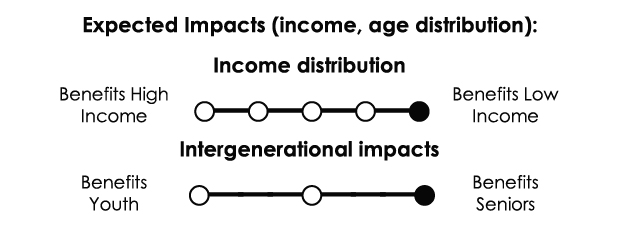
More years in good health
GBA+: Chapter 3
Healthy, Safe and Resilient Indigenous Communities
Supporting the National Inuit Suicide Prevention Strategy
- $50 million over ten years with $5 million per year ongoing to support the Inuit Tapiriit Kanatami’s National Inuit Suicide Prevention Strategy.
As described by Inuit Tapiriit Kanatami, Inuit are exposed to several risk factors that have contributed to elevated rates of suicide, such as historical trauma, isolation, abuse, poverty and undiagnosed mental health disorders. In Inuit Nunangat, rates of suicide range from 5 to 25 times the rate of suicide for Canada as a whole.
This measure will help ensure that Inuit at risk of suicide have greater access to Inuit-specific services and supports that encourage cultural continuity, healthy development, family strength and mental wellness. This will in turn help to build resilience in Inuit families and communities, and to reduce suicide in Inuit Nunangat.
GBA+ was performed: On the existing program
Target population: Inuit
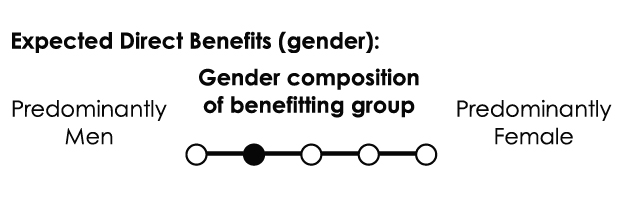
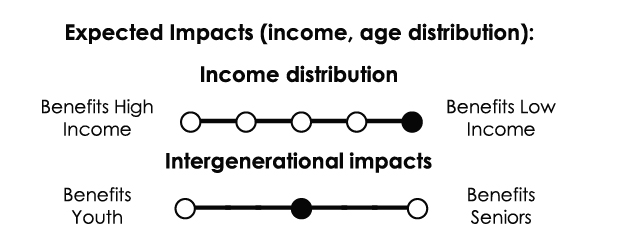

Improved mental health
GBA+ Responsive Approach
The National Inuit Suicide Prevention Strategy supports Inuit-designed solutions to address underlying suicide risk factors. Inuit regions will decide how funding is allocated, and take diverse community needs into account.
GBA+: Chapter 3
Healthy, Safe and Resilient Indigenous Communities
Supporting Indigenous Business Development
- $78.9 million over five years and $15.8 million per year ongoing to support Indigenous entrepreneurs and economic development through the Community Opportunity Readiness Program.
- $50 million over five years to enhance the funding of the Métis Capital Corporations to support the start-up and expansion of Métis small and medium-sized enterprises.
In 2016, the median employment income for Indigenous people living on-reserve was roughly half that of the non-Indigenous population ($17,251 vs. $34,013).
The proposed investment will advance Indigenous economic prosperity through targeted investments by supporting commercial and economic development at the community level through increased funding for the Community Opportunity Readiness Program (CORP). Designed to address the economic marginalization of Indigenous Peoples and provide funding and institutional support to help close socio-economic gaps, expected results include increased employment and better income for Indigenous Peoples, including women and youth. Investments will lead to increased community own-source revenue, which tends to be reinvested within communities in areas such as health, skills training and education.
Since its inception in 2014–15, CORP has provided nearly $215 million in funding for over 890 projects.
The proposed investment to support Métis Capital Corporations will further support Métis entrepreneurs by creating more opportunities to start and expand businesses.
GBA+ was performed: On the existing program
Target population: Indigenous Peoples



Increased opportunities for women to start and grow their businesses, and succeed on a global scale
GBA+: Chapter 3
Healthy, Safe and Resilient Indigenous Communities
Supporting Indigenous Entrepreneurs Through the Indigenous Growth Fund
- Up to $100 million to support the Indigenous Growth Fund through the Social Finance Fund and the Business Development Bank of Canada.
- $17 million over three years, starting in 2020-21, to expand the Aboriginal Entrepreneurship Program.
According to the National Aboriginal Capital Corporations Association (NACCA), approximately 30 per cent of Indigenous entrepreneurs supported by Aboriginal Financial Institution (AFI) financing in 2017–18 were women. Further, approximately 30 per cent of AFI-supported Indigenous entrepreneurs were 35 years or younger.
With a cumulative investment of $245 million since their inception in 1987, AFIs have provided over 42,000 loans to Indigenous businesses with a total loan value of $2.3 billion.
Since NACCA's inception in 2005, federal support delivered under the Aboriginal Entrepreneurship Program totals $475.7 million.
These proposed investments will further support Indigenous entrepreneurs and more ambitious projects. Expected results include increased employment and better income for Indigenous Peoples, including women and youth. Improving access to capital through the Aboriginal Entrepreneurship Program will create more opportunities for Indigenous entrepreneurs to start and expand businesses.
GBA+ was performed: Mid-point
Target population: Indigenous Peoples



Increased opportunities for women to start and grow their businesses, and succeed on a global scale
GBA+ Responsive Approach
- Through the Indigenous Growth Fund, NACCA will also provide targeted support to help Indigenous women and youth prepare for entrepreneurship activities, including access to start-up resources, training and business networks.
GBA+: Chapter 3
Healthy, Safe and Resilient Indigenous Communities
Indigenous Engagement on Resource Projects
- $12.8 million in 2019–20 to maintain the Government’s capacity to conduct meaningful consultations with Indigenous communities on major natural resource projects and support Indigenous economic participation in the natural resource sector.
Major natural resource projects can offer significant opportunities to Indigenous communities by providing jobs, business opportunities and a source of revenue. Many Indigenous communities are aware of these opportunities, and invest in developing their own projects and partner with others in large-scale projects.
According to Statistics Canada, Indigenous Peoples are more likely to work in the natural resources sector than non-Indigenous persons.
Supporting participation by Indigenous communities in major resource projects can also support self-determination through wealth creation and economic development for Indigenous communities.
GBA+ was performed: Later stage
Target population: Indigenous Peoples; natural resource sector



Equal and full participation in the economy
GBA+ Responsive Approach
Consultations on natural resource development projects and program activities designed to increase Indigenous participation in natural resource projects are designed to be inclusive, regardless of the gender or other identity factors of the Indigenous participants.
- Date modified: